Making sure your browser functions properly becomes crucial if you are a power user who usually has 20 to 30 tabs open. However, many people still experience the dreaded “Out of Memory” error in browsers like Microsoft Edge. In today’s intensive workloads of users, having at least 16 GB RAM is important, not saying 8 GB RAM is unacceptable. Memory leaks, which keep RAM from being correctly released even when tabs are closed, are frequently associated with this problem. The problem is exacerbated by memory management problems in Windows 11.
We’ve created a thorough guide on identifying and resolving the “Out of Memory” problem in Microsoft Edge to assist you in resolving this annoying message. You can enhance performance and avoid crashes by comprehending Edge’s resource usage and implementing focused fixes. Let’s investigate the reasons behind excessive memory utilization and look at doable strategies to improve Edge for a more seamless surfing experience.
Contents
- What is “Out Of Memory” Issue on Microsoft Edge?
- How Edge Uses System Resources
- Factors Affecting Edge’s High Memory Usage
- How To Keep Microsoft Edge in Memory
- Fix 1: Shut Down Superfluous Tabs
- Fix 2: Unused Extensions Can Be Disabled or Removed
- Fix 3: Restart Microsoft Edge.
- Fix 4: Empty your browser’s cache and cookies
- Fix 5: Microsoft Edge should be updated
- Advanced Fixes
- Fix 6: Hardware Acceleration: Enable or Disable
- Fix 7: Look for Software Conflicts
- Fix 8: Launch the SFC utility
- Fix 9: Virtual Memory (Page File) Adjustment
- Fix 10: Make a fresh user profile.
- Fix 11: Reinstall Microsoft Edge
- FAQs
- What causes Edge’s high RAM usage?
- Does Edge have a memory leak?
- For Edge, how much RAM is required?
- How can I resolve Edge’s “Out of Memory” issue?
- Conclusion
What is “Out Of Memory” Issue on Microsoft Edge?
When the RAM in Microsoft Edge runs out, the browser stops processing new tasks and displays the “Out of Memory” message. This may result in crashes, freezing, or sluggish performance. Examining Edge’s resource management and typical reasons for excessive memory usage is necessary to comprehend why this occurs.
How Edge Uses System Resources
Like other contemporary browsers, Edge depends significantly on the CPU and RAM of the machine to provide a seamless surfing experience. Memory is used by each open tab, extension, and background task. To improve stability and security, Edge employs a multi-process design, in which every tab operates in a separate process. Nevertheless, this also raises the total amount of RAM used. Additionally, the browser uses more RAM by preloading specific pages and resources for quicker access.
Factors Affecting Edge’s High Memory Usage
Multiple Open Tabs: When multiple tabs are open, RAM utilization rises dramatically because each tab operates in its own separate process.
- Add-ons and Extensions
Even when not in use, certain browser extensions drain memory by running background activities continuously.
- Websites
Websites with high-resolution graphics, embedded movies, or intricate scripts may use a lot of resources, making them poorly optimized.
- Memory Leaks
Over time, accumulating use may result from Edge’s occasional inability to release memory after closing a tab.
- Hardware Restrictions
Systems with low RAM capacities might find it difficult to provide Edge adequate memory, which would cause the issue.
- Background Processes
Preloading, auto-fill recommendations, tracking prevention, and other built-in Edge features may increase memory usage.
How To Keep Microsoft Edge in Memory
From basic fixes to the advanced ones, tackle your memory hogging browser issues.
Fix 1: Shut Down Superfluous Tabs
An excessive quantity of RAM might be used by having too many tabs open at once. When too 30+ tabs are running at once, your system may become overloaded since each one needs memory and processing power to operate. 4 solid ways to close tabs on the Edge browser.
- Clicking the “X” button on a tab will shut it.
- To simultaneously close several tabs: Choose “Close other tabs” with a right-click on any tab to keep just the tab that is now open.
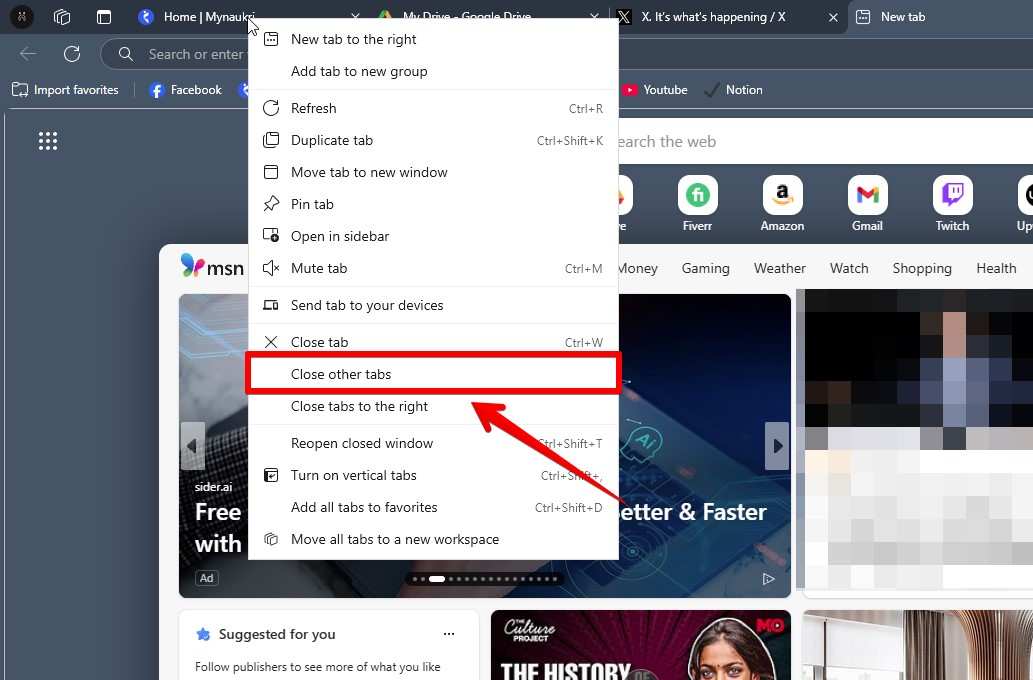
- To shut every tab to the right of the one you are now in, there is also an option to do the same.
- Use keyboard shortcuts such as Ctrl + Shift + W to close all Edge windows or Ctrl + W to close the tab that is currently open.
Fix 2: Unused Extensions Can Be Disabled or Removed
Although browser extensions improve functionality, they can also result in high resource utilization and memory leaks, which can impair speed. How Extensions Are Managed.
- On your browser, head to the hamburger menu.
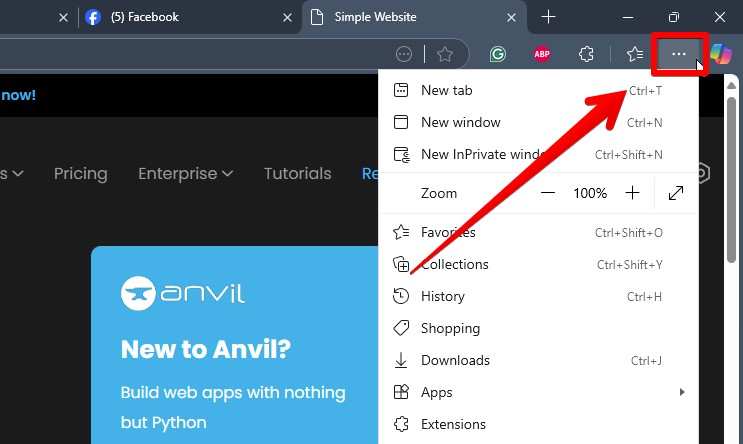
- “Extensions” > “Manage extensions” is one option.
- Examine the list of the installed extensions.
- To temporarily disable superfluous extensions, click “Remove” or turn them off.
Fix 3: Restart Microsoft Edge.
Restarting the browser might occasionally increase performance and free up memory.
- To fully exit Microsoft Edge, click the “X” in the upper-right corner.
- Check Task Manager (Ctrl + Shift + Esc) to make sure no Edge processes are still active.
- Open Microsoft Edge again.
Cache and cookie accumulation might cause memory problems and slow down the browser.
- Select “Settings” from the three-dot menu.
- Choose the option that takes you to privacy and searches.
- Click on the dedicated option that is placed on the right side of “Clear browsing data”.
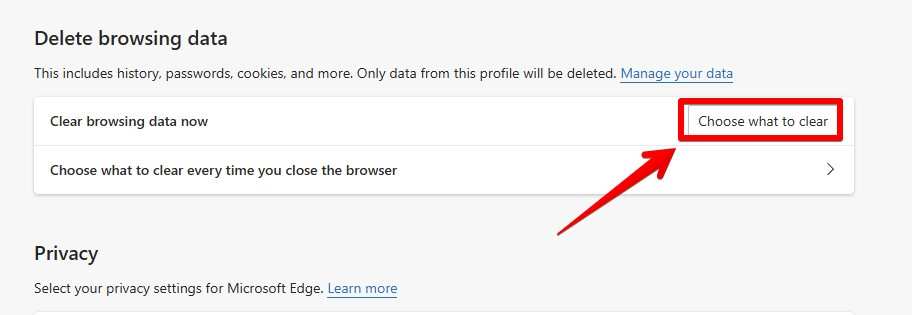
- Tick all the options (there should be three options).
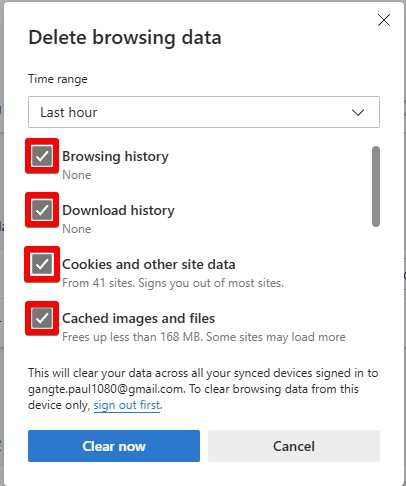
- Select “Clear now.”
Fix 5: Microsoft Edge should be updated
You can get bug fixes and performance enhancements by keeping Edge updated.
- Select “Help and feedback” > “About Microsoft Edge” from the three-dot menu.
- If new updates are pending, Edge will install them automatically.
- To have changes take effect, restart the browser.
Advanced Fixes
Try these more complex troubleshooting techniques if the basic solutions don’t work.
Fix 6: Hardware Acceleration: Enable or Disable
Although it can occasionally lead to problems, hardware acceleration takes advantage of your computer’s GPU to do tasks more effectively.
- Go to “Settings” after opening Edge.
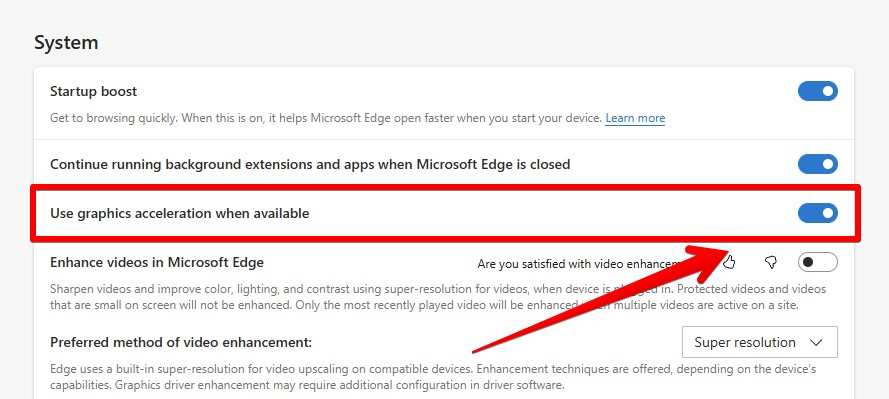
- Select “System and performance.”
- Activate or deactivate “Use hardware acceleration when available”
Fix 7: Look for Software Conflicts
Third-party apps and antivirus software are examples of programs that can affect Edge’s functionality.
- Turn off any malware-detecting service for a while and see whether the issue still exists.
- Remove any newly installed software that may be causing issues.
- To determine whether an extension or another software is the source of the problem, run Edge in InPrivate mode (Ctrl + Shift + N).
Fix 8: Launch the SFC utility
Browser problems may be caused by corrupted system files, which can be fixed by doing an SFC scan.
- Type “cmd” while holding down Win + S.
- “Command Prompt” can be right-clicked, and “Run as administrator” can be chosen.
- Type sfc /scannow and run it by pressing the enter button.
- After the procedure is finished, restart your computer.
Fix 9: Virtual Memory (Page File) Adjustment
Windows makes up for little physical RAM by using virtual memory. Memory problems may be resolved by increasing the page file size.
- Search for “Advanced system settings” by pressing Win + S.
- Select “View advanced system settings”.
- Click “Settings” in the “Performance” section.
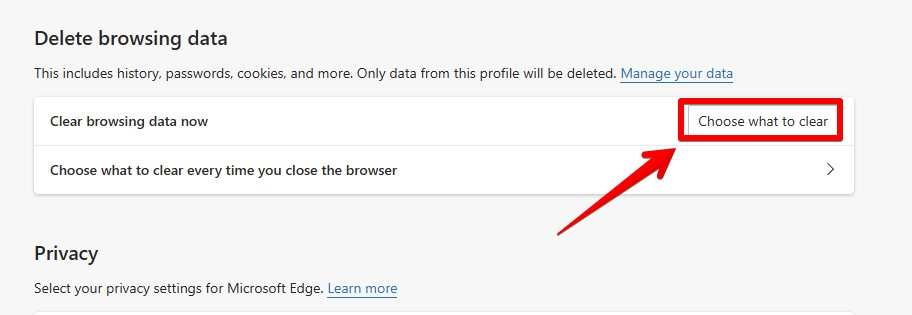
- Under Virtual Memory of the advanced section, hit on “Change”.
- remove “Automatically manage paging file size for all drives”.
- Choose “Custom size” and choose the initial size (1.5 times your RAM is advised) and maximum size (3 times your RAM).
- After selecting OK, reboot your system.
Fix 10: Make a fresh user profile.
Memory problems in Edge may be caused by a corrupted user profile. Creating a new profile may help.
- Click the profile icon in the upper-right corner of Edge after it has opened.
- Click on “Add profile” and then “Add”.
- Use a different Microsoft account to log in, or proceed without doing so.
- Verify whether the problem still exists with the updated profile.
Fix 11: Reinstall Microsoft Edge
Reinstalling Edge can offer a clean, error-free installation if everything else fails.
- To access Settings, press Win + I.
- Navigate to “Installed apps” under “Apps”
- After locating Microsoft Edge, select “Uninstall” and adhere to the instructions.
- Reinstall the most recent version after downloading it from Microsoft’s official website.
FAQs
What causes Edge’s high RAM usage?
By preloading pages, executing extensions, and effectively managing many tabs, Edge leverages RAM to enhance performance. Modern browsers typically consume a lot of RAM, but this may be controlled by shutting down tabs that aren’t being used and turning off addons that aren’t needed.
Does Edge have a memory leak?
Although Edge is resource-efficient by design, some extensions, out-of-date versions, or corrupted cache files may result in high memory usage. Potential memory leaks can be fixed by updating Edge and cleaning the cache and cookies.
For Edge, how much RAM is required?
At least 4GB of RAM is required for Edge to function properly, but 8GB or more is advised for multitasking and having numerous tabs open.
How can I resolve Edge’s “Out of Memory” issue?
Try updating Edge, deleting unnecessary tabs, turning off extensions, and cleaning your cache. Upgrade your RAM or increase virtual memory if the problem continues.
Conclusion
Although Microsoft Edge’s “Out of Memory” problem can be annoying, it can be successfully fixed with the correct troubleshooting techniques. Start with simple solutions like cleaning your cache, turning off extensions, and dismissing tabs that aren’t needed. Advanced fixes like modifying virtual memory or doing system scans can be helpful if the issue continues. You can guarantee a more seamless Microsoft Edge browsing experience by keeping your browser updated and conserving system resources.



